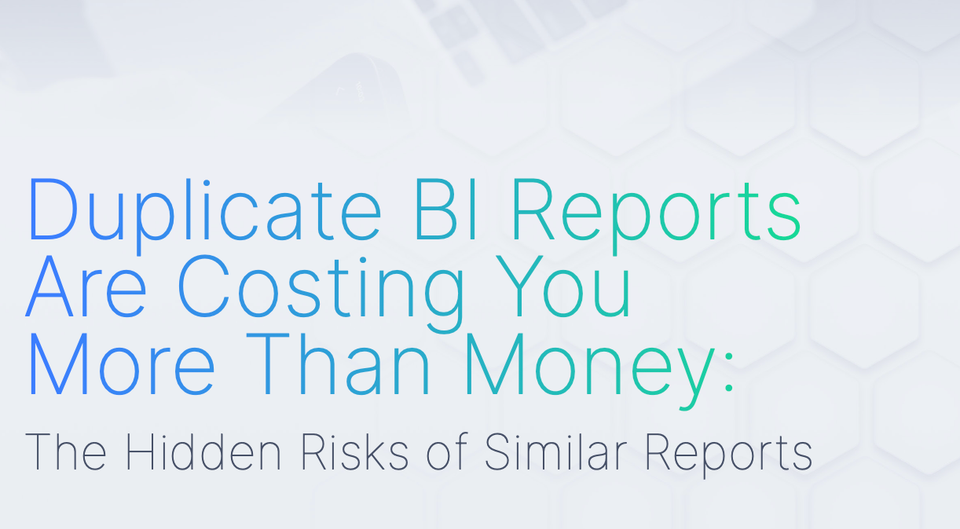Deciphering the Past: How Descriptive Analytics Illuminates Business Performance
Uncover the role of Descriptive Analytics in interpreting past business performance. Dive into its importance, tools, integration strategies, and challenges.

In the vast realm of business analytics, there's a foundational pillar that often serves as a starting point for deeper analysis: Descriptive Analytics. While predictive and prescriptive analytics look to the future, descriptive analytics provides a clear lens to understand the past. This blog post delves into the pivotal role that descriptive analytics plays in comprehending and evaluating business performance.
What is Descriptive Analytics?
Descriptive Analytics, as the name suggests, describes or summarizes raw data into an understandable format. Through tables, charts, and other visualization tools, it presents a clear picture of what has happened in a given timeframe. Think of it as the storyteller of your data, translating numbers into narratives.
At its core, Descriptive Analytics aims to condense large datasets into smaller, more digestible insights. Whether you're reviewing website traffic, sales performance, or customer behavior, it provides a clear and concise view of historical data, allowing businesses to identify patterns and trends.
The Importance of Looking Backward
While it's tempting for businesses to constantly look forward, there's undeniable value in reflecting on past actions and outcomes. By understanding where you've been, you're better equipped to map out where you're headed.
Descriptive Analytics provides clarity on past successes and missteps. For instance, if a marketing campaign resulted in a significant uptick in sales, analyzing the descriptive data surrounding that campaign can provide insights into what worked. Conversely, understanding the low periods of performance can help avoid repeating the same mistakes. Essentially, descriptive data serves as the feedback mechanism for business operations.
Tools and Techniques
There's no shortage of tools available for Descriptive Analytics, ranging from simple spreadsheet applications to more advanced business intelligence platforms. Common tools include Microsoft Excel, Tableau, and Google Analytics, among others.
Charts and graphs are the hallmark of Descriptive Analytics. Pie charts, bar graphs, histograms, and scatter plots are just a few visualization techniques that can bring data to life. These visual aids not only make data more understandable but also facilitate easier communication of insights to stakeholders. A well-constructed graph can convey a message much more powerfully than a table filled with numbers.
Integrating Descriptive Analytics into Business Strategy
Knowing how to analyze past data is crucial, but integrating these insights into business strategy is where the true value lies. Descriptive Analytics acts as the springboard for more advanced analytical endeavors.
Once patterns and trends are identified through Descriptive Analytics, businesses can move into predictive analytics, forecasting future trends based on past data. For example, if the descriptive data shows a consistent increase in sales every December, a business might predict similar growth in the upcoming years and strategize accordingly.
Furthermore, descriptive insights can lead to more targeted customer segmentation, better resource allocation, and improved operational efficiency. By understanding past performance in granular detail, businesses can make more informed decisions moving forward.
Challenges and Limitations
While Descriptive Analytics offers many advantages, it's not without its challenges. One major limitation is that while it tells you what happened, it doesn't necessarily explain why. For instance, a spike in website traffic can be identified, but the reason behind the spike might remain unclear without further investigation.
Moreover, relying solely on descriptive data can lead to a reactive rather than proactive approach. It's essential to pair these insights with predictive and prescriptive analytics for a holistic view. Finally, data quality and integrity play a crucial role. Inaccurate or incomplete data can lead to misguided insights, emphasizing the importance of robust data collection and validation processes.
Descriptive Analytics, with its focus on the past, remains a cornerstone in the analytics spectrum. By shedding light on historical performance, it offers businesses a foundation upon which to build future strategies. While it has its limitations, when combined with other forms of analytics, it provides a comprehensive understanding, enabling businesses to thrive in an increasingly data-driven world.




